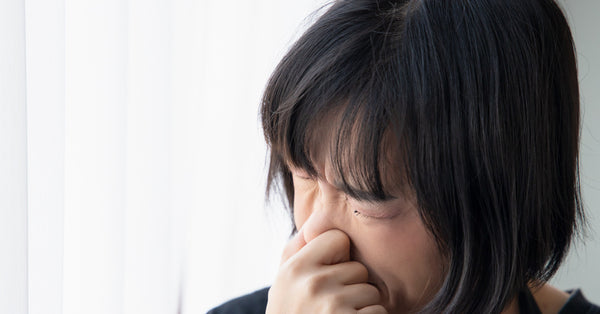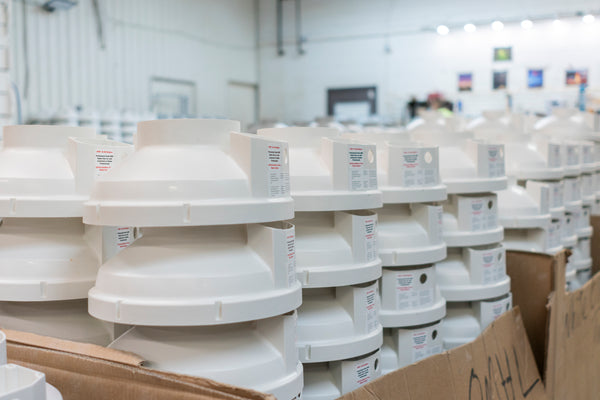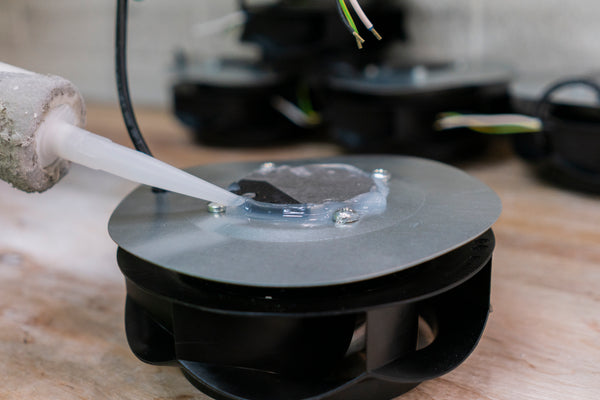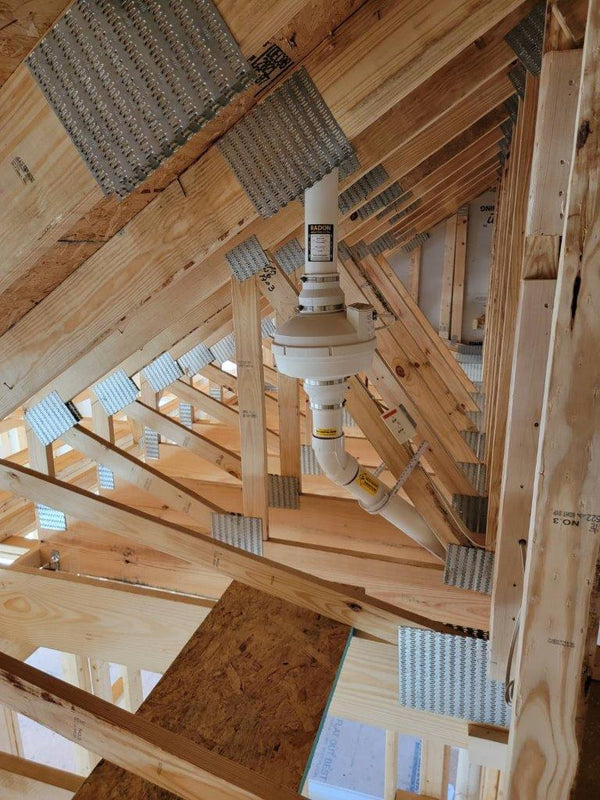
The Top 9 Sources of Air Pollution in the Home
When thinking about air pollution, people commonly picture smog-filled cities and smoke billowing from factory chimneys. However, harmful air pollutants can be lurking under your home’s roof.
The top sources of air pollution in the home can have serious health consequences. This guide will walk you through the causes of air pollution and how to address them to improve the air quality in your living space.
Mold and Mildew
Excess moisture creates the perfect environment for mold and mildew spores to multiply. These fungi can easily pollute the indoor air of homes as they increase.
Bathrooms, basements, and poorly ventilated areas are the usual culprits. Whether it’s a leaky pipe, condensation on walls, or an improperly sealed window, unchecked moisture allows fungi to flourish.
For homeowners, this is not just a cosmetic issue. Exposure to mold spores can trigger allergies and asthma attacks, as well as cause respiratory illnesses.
To combat mold and mildew, keep the humidity level in your home below 50 percent. A dehumidifier can be a huge help during periods of high humidity in the summer or in the rainy season.
Improving ventilation in areas prone to dampness can also help. Invest in a bathroom exhaust fan to control moisture levels to expel water after a shower or bath. Regularly cleaning and inspecting hidden areas under sinks and behind appliances can also prevent mold from spreading.
Outdated Building Materials
Old homes are more likely to feature outdated building materials, such as lead paint and asbestos that can release toxic substances into the air. Lead-based paint is one of the better-known offenders; the particles can become airborne through chipping or sanding. Another significant concern is asbestos—a material once praised for its heat resistance and insulation properties, but it poses severe health risks if disturbed. Asbestos can be found in old floor tile, drywall, and insulation.
In the late 1970s, the EPA listed lead and asbestos as banned materials. Therefore, these substances are uncommon in homes built after 1980.
If you own a home constructed before the 1980s, it’s worth scheduling a professional inspection to identify potential hazards. Encapsulating and removing problematic materials requires expertise; disturbing them without proper precautions can exacerbate health risks. Investing in this service will improve the home’s air quality and make it safer for all inhabitants.
New Home Furnishings
Buying new furniture, carpet, or flooring can be exciting, but they often feature a characteristic scent. Many of these items release volatile organic compounds (VOCs), which are invisible gases that can negatively impact indoor air quality. These compounds are most prominent in the first weeks or months after you bring these items into your home.
For example, that “new furniture smell” many people love is a common the result of expelling VOCs into the air. Prolonged exposure can result in headaches, dizziness, or respiratory issues.
Homeowners can minimize this by selecting furnishings labeled as low or zero-VOC products. Additionally, keeping rooms well-ventilated and using air purifiers can reduce VOC concentration.

Outdoor Pollutants
Even if you have a well-maintained house, outdoor pollutants can find their way indoors. Wildfire smoke and vehicle emissions can also intrude through vents, open windows, or poorly sealed doors.
Radon is a naturally occurring radioactive gas that can seep through foundation cracks. Since radon is colorless and odorless, it is a serious concern for homeowners. Sealing any cracks in the foundation and adding weather-stripping to windows and doors are straightforward ways to limit outdoor pollutants.
Testing for radon levels in your home is also important; long-term exposure increases the risk of lung cancer. If the test reveals elevated levels, installing a radon mitigation system is a smart investment. These systems use a fan to create a vacuum that pulls radon gas from beneath your home and directs it outdoors through a PVC pipe. Outdoor radon fan covers can disguise the outdoor components to make the system blend in with the exterior.
Tobacco Smoke
Tobacco smoke is one of the most preventable sources of indoor air pollution. Smoking indoors releases an array of harmful chemicals, including tar, carbon monoxide, and formaldehyde. The chemicals linger in the air and settle on surfaces. Exposure to secondhand smoke poses significant health risks to non-smokers, particularly children, whose developing lungs are more vulnerable.
The best way to keep indoor air free from tobacco contaminants is to make your home a smoke-free environment. Ventilation systems may help mitigate some of the effects, but they cannot completely eliminate the risks posed by tobacco smoke.
Dust and Pet Dander
Dust and pet dander are persistent indoor pollutants. Dust is a mix of various tiny particles, including dirt, human skin cells, and even microscopic pest droppings. Pet dander consists of tiny flecks of skin and proteins from saliva or urine that can trigger allergies in people visiting your home.
To tackle these pollutants, consistent cleaning is necessary. Vacuum with a HEPA filter, wash linens frequently, and dust surfaces using a damp cloth.
If you have pets, keep them well-groomed to reduce dander. An air purifier is another addition that can capture airborne particles to keep the air cleaner.
Combustion Appliances in the Home
Many homes rely on combustion appliances such as ovens, furnaces, water heaters, and fireplaces for energy and comfort. However, these essential appliances can be a source of air pollution if they’re not properly maintained.
Installing carbon monoxide detectors throughout your home is a must if you use combustion appliances. Keeping up with maintenance, such as chimney cleaning and furnace tune-ups, will prevent harmful gases from leaking into your living space.

Household Products
Household products—such as cleaning sprays, candles, air fresheners, and personal care items—could contribute to indoor air pollution. Some products emit the same type of VOCs found in new home furnishings; the VOCs can build up over time in poorly ventilated spaces.
Select natural or fragrance-free cleaning products to minimize exposure. Beeswax or soy candles are great alternatives to paraffin-based candles because they don’t produce soot when they burn. If you do use potentially harmful household products, check that your home has proper ventilation or open a window to let in fresh air.
HVAC System
The HVAC system circulates air throughout the home, but if the system isn’t well-maintained, it can quickly become a source of pollution. Filters clogged with dust, mold in the ductwork, or leaks in the system can degrade the air you breathe.
Replace HVAC filters every three months. Schedule annual inspections to ensure it operates correctly and doesn’t harbor any harmful substances. Regular maintenance improves air quality and extends the life of the system for year-round efficient operation.
Take Control of Your Home’s Air Quality
Prioritizing air quality is not just beneficial for your health but also enhances your overall comfort indoors. Understanding the top sources of air pollution in the home is the first step toward creating a cleaner, healthier space for your family. From tackling mold and VOC emissions to installing a radon mitigation system, addressing these issues will considerably improve the air you breathe.





